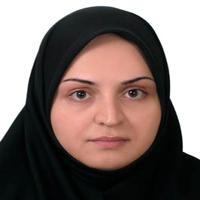Statistical analysis of simultaneous removal of salinity and organic loading from wastewater using phytoremediation process
Author(s):
Article Type:
Research/Original Article (دارای رتبه معتبر)
Abstract:
High salinity wastewater is one of the main environmental issues. Using biological treatment systems to treatment this kind of wastewater is hard due to loss of microorganisms. Phytoremediation is one of the main methods to treat this type of wastewater, which is an environmental friendly and a low cost process. In this research we aim to study operation of two plants, including chrysopogon zizanioides known as Vetiver grass and Cyperus alternifolius know as umbrella, to simultaneous removal of salinity and organic loading. We assume five different combination of wastewater which are called statistical treatments and characterized by different amount of salinity and COD. Statistical treatments contain wastewater with Electrical conductivity 0,2.5,5,7.5,10 (ds/m) and 0,75, 150, 250, 300 (mg/L) COD respectively. Pure water is used as control treatment. Results show that in reactors with low level of salinity, both plants have better operation in removing of salinity and organic loading. For electrical conductivity above 5 and 7.5 ds/m, signs of salinity stress including Chlorosis and withering seen in leaves of both plants. For chrysopogon zizanioides, different statistical treatments results in different removal of organic loading range from of 60 to 12 percent. Salinity removal is ranged from 53 to 4 percent. For Cyperus alternifolius reduction in organic loading and salinity are respectively varied from 49 to 5 and 20 to 1 percent. Results of this study in laboratory scale shows that using phytoremediation method in constructed wetland for different combination of salinity and organic loading results in 17 and 15 percent reduction in salinity and wastewater for each unit of chrysopogon zizanioides and Cyperus alternifolius respectively. By increasing the level of salinity the trend of electrical conductivity is decreased. For the wastewater with 2.5 ds/m electrical conductivity, the most absorbing salinity absorbing is seen for both plants, which is 53 percent for chrysopogon zizanioides and 30 percent for Cyperus alternifolius. Reduction in capability of absorbing salt occurred for both plants due to completeness of salt aggregation capacity of the plant. By increasing the electrical conductivity of wastewater solution, wither and reduction in operation of the plant is seen as well. Increasing the salinity level results in decreasing the trend of organic loading reduction. COD removal for chrysopogon zizanioides is greater than Cyperus alternifolius in all reactors, which is related to natural characteristics of this plant, higher tolerance of salinity fluctuations and different phytoremediation mechanism. In statistical analysis of morphological characteristics of plants, the statistical population is all plants for different combination of wastewater and statistical controls. For each plant, results of different statistical treatments are compared to each other. The null hypothesis for independent tests assumes that the waste water treatment doesn’t have effect on morphological characteristics of the plant. So, rejecting this hypothesis means that all combination of wastewater doesn’t have the same effect on morphological characteristics. This hypothesis is considered separately for each of morphological characteristics by use of two sided independent sample T-test. These characteristics included dry weight, mean leaf area, mean stem diagonal and root volume. Results indicate that increasing salinity will affect the morphological characteristics with 95% confidence. Fitting the generalized linear regression shows that existing of organic loading doesn’t have meaningful effect on morphological characteristics, and level of salinity of wastewater affect the growing characteristics of the plant.
Language:
Persian
Published:
Quranic Knowledge Research, Volume:18 Issue: 3, 2018
Pages:
207 to 220
https://www.magiran.com/p1886273
سامانه نویسندگان
مقالات دیگری از این نویسنده (گان)
-
Modeling, optimization and kinetic investigation of Acid Orange 7 degradation using ozonation in a cylindrical reactor with recirculation flow with RSM
Mohamad Ghalebizade, *
Quranic Knowledge Research, -
Utilization of Modified Clay as a Low-cost Adsorbent for Landfill Leachate Treatment
Matin Hajjizadeh, *, Shahriar Ghammamy, Forough Farsad
Journal of Chemical Health Risks, Spring 2022 -
Optimization of Effective Parameters in Removal of Acid Blue 25 by Fenton Process with the Aim of Reducing Iron Consumption
Sobhan Hooshmand, *
Journal of Environmental Sciences and Technology, -
Sulfate Removal from Water Using Activated Red Mud: Kinetic, Isotherm and Thermodynamic Studies
*, Alireza Arhami Dolat Abad
Amirkabir Journal of Civil Engineering,


